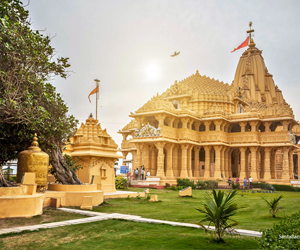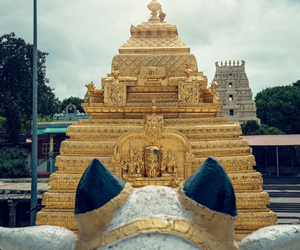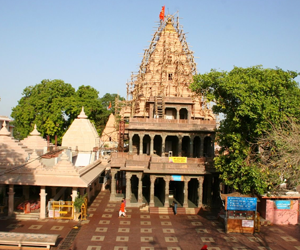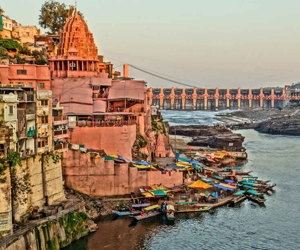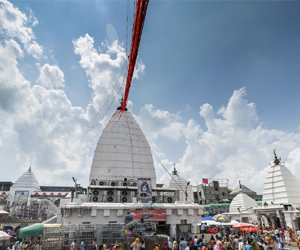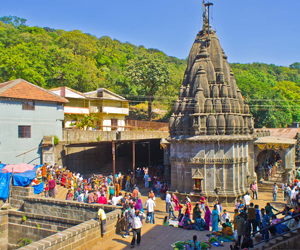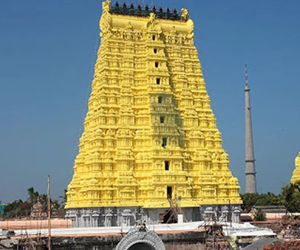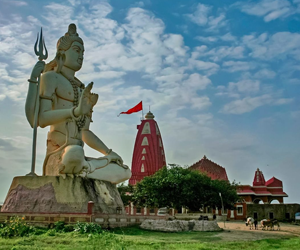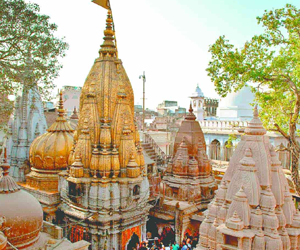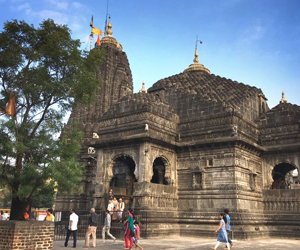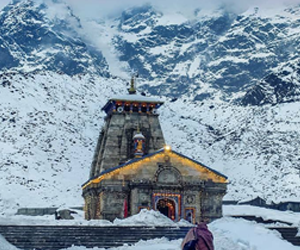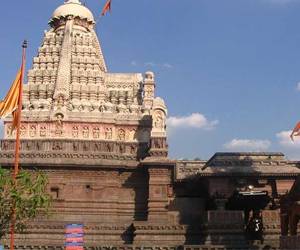Jyotirlingas
The 12 Jyotirlingas in India - Temples of Lord Shiva
OVERVIEW
12 Jyotirlingas- India's Spiritual Pride
India's broad horizons are infused with holy reverence, from magnificent old temples to humble rural shrines. You will always discover the peace that flows by the dwelling of Gods, no matter where your footsteps take you in India. Without a question, India is the cradle of gods and deities, with Lord Shiva being the most adored divinity among them among Hindus all over the world. Lord Shiva is honoured as Shivling and is also described as Mahadev (‘the Supreme God').
The mighty Lord Shiva is said to bestow salvation to all of his worshippers. The 12 Jyotirlingas are the most distinctive and holy representations of Lord Shiva. These 12 Jyotirlingas are also known as Dwadasa Jyotirlingas, and they are Hinduism's most holy places of devotion. It is also claimed that if a person completes the darshan of 12 Jyotirlingas, he will be free of karmic debt and the loop of life and death.
The Jyotirlingas are a symbol of the unmanifested Shiva's visage, whose majesty has enticed followers since the dawn of time. Devotees from all over the world travel to explore Lord Shiva's ancient temples and find spiritual tranquillity. The 12 Jyotirlinga Temples of Lord Shiva are listed here, along with their mythology.
Somnath Temple - The ‘Somnath Temple,' located in Gir Somnath, Gujarat, is one of the earliest shrines of the twelve holy Jyotirlingas. The temple, which is considered the holiest of all India's Jyotirlinga temples, attracts thousands of pilgrims every year, especially during Mahashivratri. Lord Brahma is supposed to have instructed Moon-god to construct a shrine for Lord Shiva. The temple is thought to have been constructed between the years 320 and 500 AD. The temple was originally said to be built of pure gold and silver, but it was heavily damaged by Arab and Afghani invaders, as well as the Mughal emperor Aurangzeb, at various times.
Mallikarjuna Temple - This ancient temple of Mallikarjuna was built about 1234 AD by the Hoysala King, Vira Narsimha. This creation has been captivating the hearts of worshippers with its holy essence and magnificent Dravidian style of construction. The temple is located in Srisailam, Andhra Pradesh, atop a hill. Beautiful wall sculptures and carvings depicting episodes from the Ramayana and Mahabharata adorn the temple walls. The temple's magnificent statues display the remarkable sculpting talents of the Hoysala artists of the time. One of the most intriguing attractions to see in this temple is the Yakshagana Performance, which takes place every evening.
Mahakaleshwar Temple - The Mahakaleshwar Temple, located on the banks of the River Kshipra in the ancient city of Ujjain, Madhya Pradesh, is one of India's top Tantra Temples, in addition to housing one of the twelve holy Jyotirlingas. The ‘Bhasm-Aarti,' the first ceremony conducted in the morning during which the Shivling is washed in ashes collected from a fresh cremation pyre, is the temple's major attraction. Thousands of pilgrims visit this temple from all over the world, especially during the month of Sawan and on Nag Panchami.
Omkareshwar and Mamleshwar Temples - The holy ‘Omkareshwar' and ‘Mamleshwar' temples on the banks of the Narmada River on the island of Mandhata in Madhya Pradesh house Lord Shiva's fourth sacred Jyotirlinga. The island is said to be in the shape of 'Om,' a mystical emblem in Hindu mythology. On the occasions of Shivratri, Mahashivratri, and Kartik Poornima, thousands of devotees go there to see Omkareshwar Jyotirlinga. The sanctity of these temples is enhanced by the serene vibes and gorgeous vistas of the holy Narmada River. A small ridge separates Mamleshwar's temple from Omkareshwar.
Baidyanath Dham - Baidyanath Dham in Jharkhand is one of the 12 Shiva Jyotirlingas with numerous stories surrounding it. This temple complex, which includes 21 temples, is located in Deoghar, in the Santhal Parganas district. The beautiful stones adorn the sacred Shivalinga that exists here. It is not only one among the 12 Jyotirlingas, but also a famous Shakti peeth, where Goddess Shakti's bodily parts have fallen. Raja Man Singh, the king of Amber during Mughal rule, is claimed to have created Mansarovar, a pond here. The pyramidal tower of the temple stands 72 feet tall. Chandrakanta Mani, an eight-petalled lotus, is the most gorgeous sight to witness.
Bhimashankar Temple - Bhimashankar Mandir, the sixth Jyotirlinga, is a magnificent sight. It is located in the Sahyadri Hills near Pune, Maharashtra, in a tiny community named Bhorgiri. The presence of the ‘Bhimashankar Temple,' which houses another ancient Jyotirlinga of Lord Shiva, gives the location a religious significance. In its Nagara (Indian Aryan architecture) style, the temple's Garba Griha is a magnificent mix of Rajasthani and Gujarati elements. Scenes from the Shiv Leela, Krishna Leela, Ramayana, and Mahabharata are depicted on the temple's outside walls. Nana Phadnavis constructed this fascinating item of devotion in the 18th century.
Rameshwaram Temple - Rameshwaram, a sacred town in Tamil Nadu, bears immense spiritual significance for Hindus and is regarded as one of the "Char Dham" pilgrimage locations. One of the twelve holy Jyotirlingas may be seen in the Ramanathaswamy Temple. The temple is an outstanding example of excellent architecture. Majestic towers, carved pillars, and opulent passageways will take your breath away. Lord Rama's unwavering trust in Lord Shiva is symbolized through the Ramanathaswamy Temple.
Nageshwar Temple - The ‘Nageshwar Mahadev Temple,' which is regarded to be the abode of one of the twelve Jyotirlingas, is located near Dwarka, one of the ‘Char Dham' pilgrimage places for Hindus in Gujarat. The temple's exact date of construction is unclear, however, it was restored in 1996 by Late Gulshan Kumar. Every year, thousands of pilgrims flock to the temple to seek the blessings of Lord Shiva, who is revered here as ‘Nagdev.' This temple's main feature is a 25-meter-tall statue of Lord Shiva in a sitting pose, which makes for a lovely backdrop for a memorial photo.
Kashi Vishwanath Temple - The temple was built in the 11th century and has been looted several times by Afghan and Arab conquerors. Rani Ahilya Bai Holkar rebuilt the current temple in the year 1780. The temple's towers are gold-plated, with a golden chhatri on each one. During the holidays of ‘Makar Sankranti,' ‘Kartik Poornima,' ‘Shivratri,' ‘Maha Shivratri,' ‘Dev Diwali,' and ‘Annakoot,' people from all over the globe go to Kashi.
Trimbakeshwar Temple - The beautiful Trimbakeshwar Temple, a legacy of the third Peshwa, Balaji Bajirao, draws worshippers from all over the world to embrace the spiritual maelstrom within themselves. Trimbak, a tiny town near Nashik in Maharashtra, is where it is located. The heavenly brilliance of this temple is enhanced by the picturesque vistas of Brahmagiri Hill and Kalagiri Hill. The Trimbakeshwar Shivling is housed in the inner sanctuary of the temple, which is made of black stone in the Nagara style of construction. The three-faced Shiva Linga, which represents Lord Shiva, Lord Vishnu, and Lord Brahma, is the most intriguing sight. The Linga is encrusted with a variety of valuable stones, including diamonds and emeralds.
Kedarnath Temple - The ‘Kedarnath Temple,' located in Uttarakhand's Himalayan Range, is the tallest of the twelve Jyotirlingas. The temple is thought to have been built during the Mahabharata period. For Hindus, the Kedarnath Temple is one of the 'Chota Char Dham' pilgrimage destinations. The temple is closed during the winter months due to the harsh cold weather on the hills, and the idol of Lord Shiva is transported down to ‘Ukhimath,' where the god is worshipped throughout the winter months. According to Hindu calendars, the idol is reinstalled in the Kedarnath Shrine during the month of Vaisakh, when the temple is available to pilgrims.
Grishneshwar Temple - The ‘Grishneshwar Temple' dates from the 18th century and is located in the hamlet of Verul, near Aurangabad in Maharashtra. The architecture, paintings, and sculptures on the temple walls are a reminder of the craftsmen's great architectural talents from a bygone period. It is India's smallest Jyotirlinga temple, consisting of a five-tiered "shikara." Ghushma, according to the Shiv Purana, was a woman whose son was murdered by her own sister. She began praying to Lord Shiva out of sadness, and Shiva, pleased with Ghushma's devotion, rewarded her with a son. Shiva, in the guise of Grishneshwar Jyotirlinga, stayed here forever at Ghushma's request.
Explore 12 Jyotirlingas In Your India Vacation And Seek Divineness
It is thought that visiting all 12 Jyotirlingas on a sacred pilgrimage removes darkness from a person's life and gives serenity, health, and pleasure. Please contact Tripnomadic if you would like to include any of the Jyotirlingas or all Jyotirlinga sites in your India Exploration!

